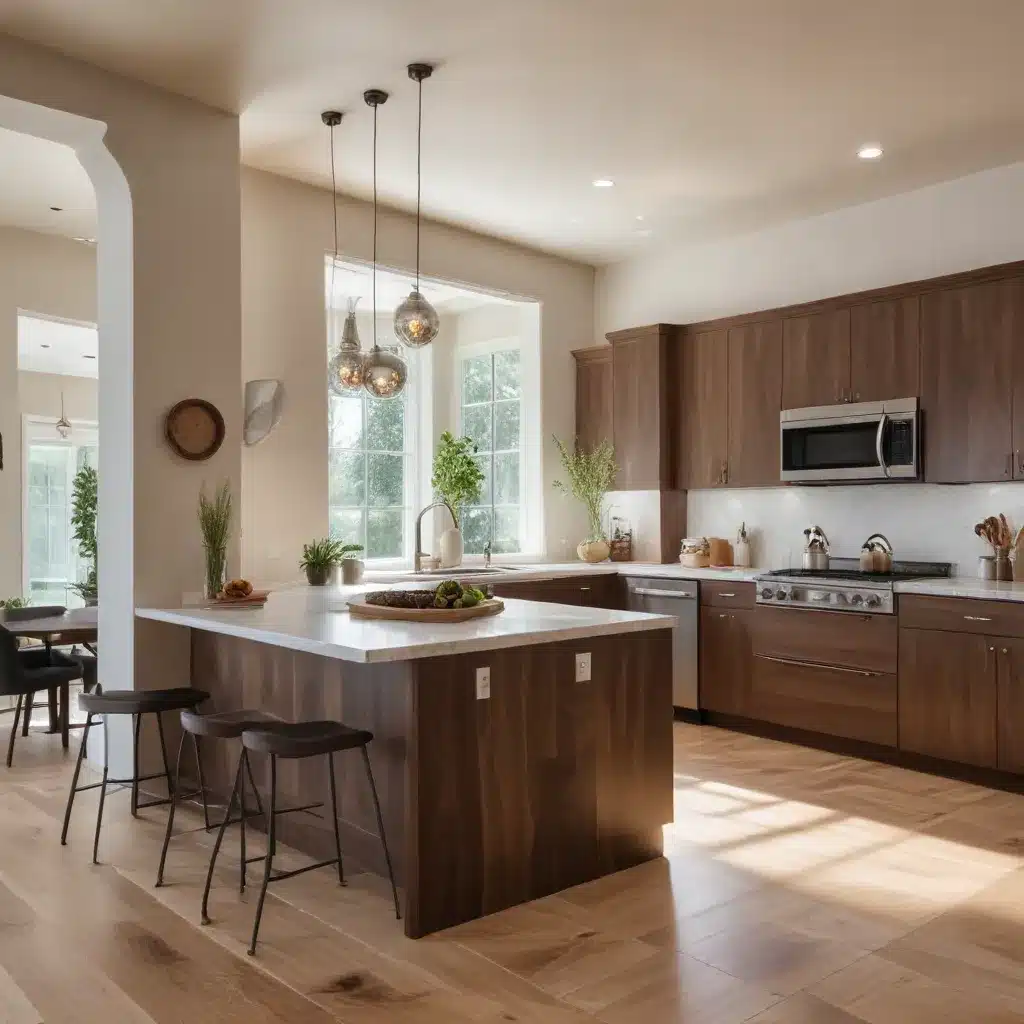
Designing Kitchens for Holistic Health and Wellbeing
In recent years, there has been a significant shift in how homeowners approach the design of their living spaces. Beyond aesthetics and functionality, the focus has now expanded to include elements that actively promote wellness and support a healthy lifestyle. This wellness-centric approach is particularly evident in the design of kitchens, which serve as the heart of the home and play a crucial role in our daily lives.
The Evolving Role of the Kitchen
Traditionally, kitchens were designed primarily for convenience, catering to the storage and preparation of pre-packaged, processed foods. However, as our collective consciousness has turned towards healthier living, the purpose of the kitchen has evolved. Homeowners now seek spaces that facilitate the storage and preparation of fresh, wholesome ingredients, encouraging nutritious eating habits and a stronger connection to the origin of our food.
Moreover, the kitchen has become a hub for social interaction and shared experiences. Families and friends increasingly gather in the kitchen, not just to dine but to collaborate on meal preparation, engage in hands-on learning, and cultivate a sense of community. This shift has led to a demand for kitchen designs that support multiple users and various functions, fostering a sense of wellness through the very act of cooking and gathering.
Incorporating Wellness-Focused Design Strategies
To create kitchens that actively promote wellbeing, designers and builders must thoughtfully incorporate a range of wellness-focused elements. Here are some key strategies to consider:
1. Optimized Layouts and Ergonomics
The layout and ergonomics of a kitchen heavily influence how the space is used and experienced. By designing kitchens with ergonomic principles in mind, homeowners can enjoy improved workflow, reduced physical strain, and a more enjoyable cooking experience.
Strategies to Consider:
– Ample counter space for food preparation
– Strategically placed storage solutions to minimize bending and reaching
– Adjustable-height countertops or islands to accommodate different users
– Inclusion of seating areas for collaborative cooking and socialization
2. Air Quality and Ventilation
The quality of the air in the kitchen can have a significant impact on overall health and wellbeing. Proper ventilation and air purification systems are essential for removing cooking odors, smoke, and airborne particles, ensuring a clean and rejuvenating environment.
Strategies to Consider:
– High-performance range hoods and exhaust systems
– Integrated air filtration and purification systems
– Strategically placed windows and doors to encourage natural airflow
3. Lighting and Daylighting
Lighting plays a vital role in creating a sense of wellness and fostering a positive mood. Kitchens should incorporate a balanced lighting plan that combines task lighting, ambient lighting, and natural daylighting to support various activities and promote an overall sense of wellbeing.
Strategies to Consider:
– Ample natural light through large windows, skylights, or sliding doors
– Adjustable task lighting for food preparation and cooking
– Dimmable ambient lighting for a cozy, relaxing atmosphere
4. Material Selection
The materials used in kitchen design can have a direct impact on indoor air quality, sustainability, and the overall user experience. Careful selection of non-toxic, low-emissions materials can contribute to a healthier living environment.
Strategies to Consider:
– Countertops made from natural stone, quartz, or recycled materials
– Cabinetry and millwork constructed from sustainably sourced wood or eco-friendly alternatives
– Flooring options such as cork, bamboo, or low-VOC tile
5. Biophilic Design Elements
Incorporating biophilic design principles, which focus on the integration of nature within the built environment, can have a profound impact on the wellbeing of kitchen occupants. Biophilic elements can enhance the sensory experience, foster a connection to the natural world, and promote a sense of calm.
Strategies to Consider:
– Integrated herb gardens or living walls
– Strategically placed windows and skylights to bring in natural light and views
– Incorporation of natural materials, textures, and patterns
6. Smart Home Integration
Advancements in smart home technology have introduced a range of features that can contribute to a wellness-focused kitchen design. From intuitive appliances to voice-controlled systems, these integrated solutions can simplify tasks, improve efficiency, and enhance the overall user experience.
Strategies to Consider:
– Smart ovens, refrigerators, and dishwashers with energy-saving and programmable features
– Voice-activated lighting, ventilation, and water controls
– Integrated systems for water filtration and air quality monitoring
Designing the Wellness Kitchen of the Future
As homeowners continue to prioritize health, sustainability, and a deeper connection to their living spaces, the role of the kitchen is evolving. By incorporating wellness-focused design strategies, builders and designers can create kitchens that not only look beautiful but also actively contribute to the physical, mental, and emotional wellbeing of their occupants.
At Local Builder London, we recognize the importance of this shift and are committed to staying at the forefront of wellness-driven kitchen design. By blending our expert construction knowledge with a deep understanding of the latest design trends and sustainable practices, we can help you transform your kitchen into a sanctuary for holistic health and happiness.
Whether you’re planning a full kitchen remodel or seeking to incorporate wellness-focused elements into your existing space, our team of experienced professionals is here to guide you every step of the way. Contact us today to explore how we can create a kitchen that nurtures your body, mind, and soul.
Key Takeaways
- Kitchens are evolving from purely functional spaces to hubs that promote wellness and healthy living.
- Incorporating strategies like optimized layouts, improved air quality, natural lighting, and biophilic design elements can significantly enhance the kitchen’s impact on occupant wellbeing.
- Smart home technology integration can further streamline tasks, improve efficiency, and contribute to a more intuitive, wellness-focused kitchen experience.
- By prioritizing wellness-driven design, builders and designers can create kitchens that are not only beautiful but also actively support the physical, mental, and emotional health of homeowners.
Contact Local Builder London today to transform your kitchen into a wellness-focused sanctuary for your family.


